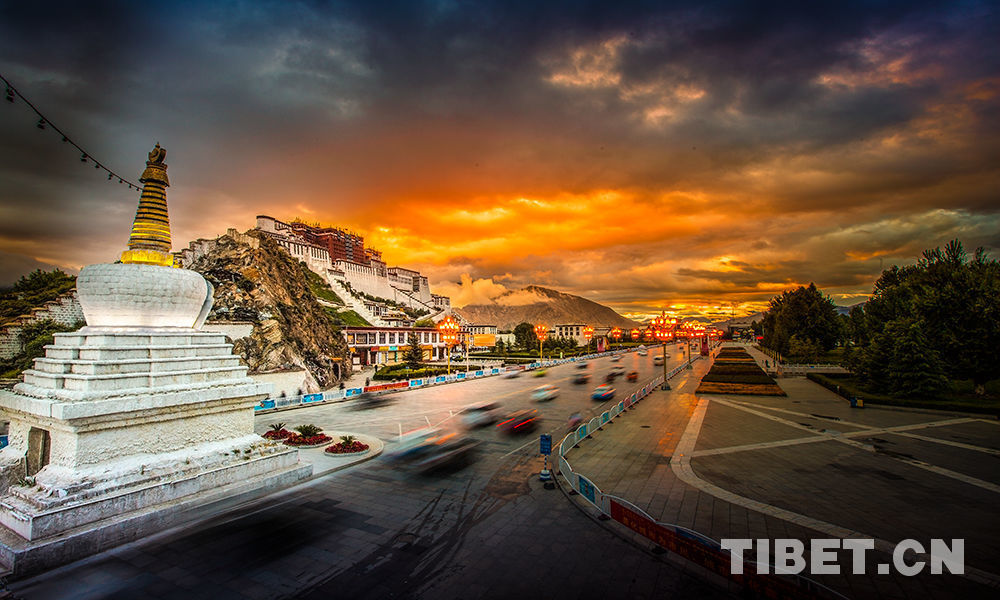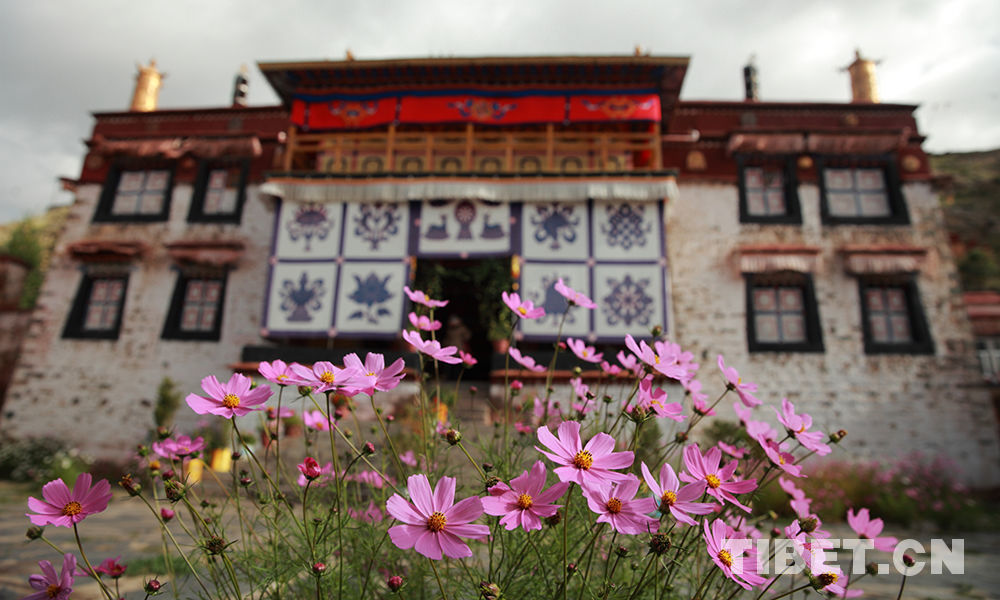Commentary: Regional Ethnic Autonomy vs "Greater Tibet Region"
The Regional Ethnic Autonomy is a basic national policy of China on ethnic issues. However, the Dalai Lama frequently criticized it and claimed that “in the current system, Tibetans do not have real autonomy” and proposed his “high-degree autonomy”. And he also plotted the “Greater Tibet region”, which never exists in Tibetan history. Then what is the right policy for ethnic Tibetans? Facts will tell.
Historical context of Regional Ethnic Autonomy
In the Nationalist Movement of the 19th and 20th centuries, nation-state had become a universal notion, which added more complexity to the ethnic issues in contemporary China. How to constitute the nation and state in the Chinese society with different ethnic groups, religions, languages, cultures and customs remained a question.
Since the late 19th century,some Chinese scholars proposed that the five major ethnic groups including Han, Tibetan, Manchu, Mongolian and Hui had assimilated and a nation which could accept them all must be established. When the Republic of China was founded in 1912, Dr. Sun Yat-sen, Interim President announced that all of the five major ethnic groups must be united as one nation. However, it was culture, but not coercion that drove the integration; and it was through assimilation, but not conquest that accomplished the integration!
According to a Korean scholar, the Chinese nation was established on the premise of the majority ethnic group (the Han) assimilating other ethnic minorities. The current territorial and demographic structure of modern China was formed based on that of the Qing Dynasty (1644-1911). It is worth note that the Chinese nation came into being in the context of imperialist invasions in the late Qing Dynasty period, and Dr. Sun’s “one nation” concept was itself a strong reaction against separation. In terms of administrative divisions, although the original counties and magistrates had been incorporated in the traditional tributary system, it was quite different from it (the metropolitan state’s economy did not depend on the tributes paid by its vassal states) because it stressed that all ethnic groups were equal regardless of ethnicity, stratum or religion. Yet this also differed from the ethnic policy of the Regional Ethnic Autonomy made by the Communist Party of China, which acknowledged distinction between different ethnic groups and promoted cooperation, exchanges and common development among them.
Why Regional Ethnic Autonomy is the best system for Tibetans?
In March 1959, the Chinese government led the Tibetan people to carry out the Democratic Reform. In 1984, the state promulgated and implemented the "Law of the People's Republic of China on Regional Ethnic Autonomy," making it a basic political system of the state, setting out comprehensive provisions regarding the rights of self-government of the ethnic autonomous areas in political, economic, cultural and other spheres, and their relations with the central government. It has thus provided a powerful legal safeguard for the full exercise by the Tibetan people of the right of self-government.
Essentially, the Regional Ethnic Autonomy is based on the principle that All Cultures are Equal. It is not only an inheritance of the legacy of the nationalist evolution in the late 19th and early 20th centuries, but also an important creation! It emphasized the difference in ethnicity, culture, religion, language, custom and social development of different ethnic groups. It does not deny the integrity of the Chinese nation, nor it is established in the single scope of an ethnic group, but an ethnic region instead. The system absorbed the policy in the imperial time to form a flexible “central-local” relationship based on different customs, cultures, systems and historical conditions. However,it is not the replication of history, but a creation stressing the uniformity of the nation’s sovereignty and the social system centered on the people.
The first principle of the Regional Ethnic Autonomy is in favor of cooperation between ethnic groups and against ethnic separation and independence from the Chinese nation. And its precondition is equality, implying not only the equality between the Han and other ethnic minorities, but also that between different ethnic groups.
The second principle is that the autonomic unit is not set up based on a sole ethnic group, but a region recognizing the diversity of ethnic groups. The late Chinese Premier Zhou Enlai said, the Han had a big population, who live on a small part of the land; On the contrary, minority nationalities has a small population, who live on a large part of the land. If a confederate system were instituted in China, it would have brought about separation and clashes between different ethnic groups. Further, it would drive out many people since many ethnic groups lived together in the same areas for a long time such as in Inner Mongolia, Guangxi, Yunnan, which would harm ethnic unity and their development. In terms of “splitting Tibetans from the Chinese nation”, a Chinese anthropologist said, this trend stemmed from foreign investment focused on Tibet. And the imagination of the Western world helps indulge somewhat the self pride of the ethnic Tibetans. However, they have little knowledge of them and their inhabited areas. So he asked: Do the cultures of other ethnic groups deserve aid? Furthermore, the intervention of foreign forces has caused grudge, conflict and the tendency for separation between different ethnic groups. In a multi-cultural society, any polity with equality must be set up on the principle of All Cultures Are Equal. If only one ethnic culture is favored, and the rest of them are debased, it will hurt them and lead to separation among them. So we might ask: when those who question the Regional Ethnic Autonomy,how many of them had fully understood the relationship between Chinese ethnic groups and their cultural status?
Specifically, Tibet is an area inhabited mostly by Tibetans who believe in Tibetan Buddhism. Since the Chinese revolution showed great sympathy on the oppressed ethnic groups,the newly established People’s Republic of China conducted a policy of regional ethnic autonomy instead of the “divide and rule” policy in the ancient times. Therefore, the Regional Ethnic Autonomy, referring to “Great co-existence, small inhabitance”, criticized both the Han chauvinism and the local nationalism aiming to promote common wealth of all ethnic groups.
All in all, the policy of Regional Ethnic Autonomy was made based on two preconditions: One is that different ethnic groups live together and conduct exchanges while retaining their distinctive characters; the other is that the autonomy is realized on the regional basis, but not on the single ethnic basis. It can promote the development of ethnic minorities to prevent them from being isolated from the mainstream society such as the American Indians, or acting as “antiques” like many other weak ethnic groups in the world, who were far left behind in the trend of social progress. Furthermore, the concept of “region” deserves credit because it surpasses the scopes of race, ethnicity and religion, and integrate all of these aspects into one area with mixed natural conditions, cultures and traditions.
Does “Greater Tibet” ever exist?
Then what is the difference between the Tibet Autonomous Region and the “Greater Tibet” proposed by the 14th Dalai Lama.
The so-called “Greater Tibet” includes not only the whole Tibet Autonomous Region, but also the entire Qinghai Province,half of Sichuan Province,half of Gansu Province, one fourth of Yunnan Province and south of Xinjiang Uygur Autonomous Region, even encompassing some non-Tibetan areas. What a big appetite he has!
However, the “Greater Tibet”is a sheer new concept! The Dalai Lama wants to “establish an entity where all Tibetans live within it”. It is in absolute contrast to the traditional administrative division back in China’s Tang Dynasty (618-907AD) and Yuan Dynasty(1271-1368 AD. If the “Greater Tibet”were placed into the traditional Tibetan area,two questions would arise:
Firstly, it has been over 700 years since Amdo and Kam separated from Tibet, and the demographic structure has also greatly changed. So what is the reason to integrate it into the “Greater Tibet”?
Secondly, why Ladakh, Bhutan and Sikkim which have separated from Tibet under the modern colonial rule are not included in “Greater Tibet”?
Does this double-standard concept mean the Dalai Lama’s acknowledgement of British colonial rule and its aftermath in contemporary China?
To understand this issue, a stance must be discarded in the first place that Tibetan civilization is a subsidiary of the civilization of the Central Plains of China. And it must also be realized that the Tibetan civilization derived from the eastbound expansion before the 13th century so that it had been deeply influenced by the Chinese civilization and vice versa.
According to a Chinese scholar named Shi Shuo, the Tibetan ethnic group came into being bewteen the fall of the Tubo Empire and the advent of Yuan Dynasty in the 13th century. During the one-hundred-year rule by the Yuan, the ties between Tibet and the Central Plains of China became closer, marking a new epoch of the relationship between Tibet and central China. And the Ming Dynasty also confirmed its rule over Tibet soon after it came to power. Yet this relationship was not resulted from a unilateral imposition on Tibet. Instead, Tibet came under its rule out of its own will right afterwards. The Qing Dynasty also exerted its authority over Tibet after the Mongolian noble tribes paid allegiance to the imperial court. During this period of time,Tibet’s eastbound expansion never ceased. In 1918, the Tibetan boundary set after Silam Conference even included some fertile land to the east of Tibet where many Han people inhabited. And quite a number of Tibetans also live in the areas inhabited by the Han, Mongolia, Hui, Qiang, Naxi. In today’s Tibet Autonomous Region, except for Tibetans, there are many other ethnic groups living together including the above groups. Therefore, it is absolutely a bias that by force was Tibet incorporated into the Chinese territory.
As a matter of fact, it was the result of the eastbound expansion of Tibetan civilization and the westbound extensin of the Central China civilization. From the historical record,the Dalai Lama has never ruled such a big area! And even during the time before the Democratic Reform in 1959, the area under his rule and his Gaxag government were never beyond the boundary of the Tibet Autonomous Region. As is known, the rear Tibet and northern Tibet is always the Panchen Lama’s sphere of force and never his!
If all Tibetan areas were encompassed into the scope of “Greater Tibet Region” and ignore the status quo of different ethnic groups living together, it would bring about the oppression, discrimination and exclusion of other ethnic groups.
In this sense, it is an historic insight that the Chinese government proposed the policy of the Regional Ethnic Autonomy to expand the autonomy area in order for different ethnic groups to seek common development on the collaborative basis taking the complex structure of autonomy.
The policy of the Regional Ethnic Autonomy adopted by the central government of China is a historical tendency evolved from the Chinese political practice. The 60-year experience proved that it is the right policy for all ethnic Tibetans. “The Greater Tibet Region” is what the 14th Dalai Lama fabricated himself with no historical record and in violation of the development of ethnic Tibetan with the real purpose to seek the “Tibet independence”. Those Westerners prefer to believe in him because they know little about China’s history but always prefer to look at Tibet from their own perspective, and some with strong prejudice against China. It is time for them to break their stereotype and seek truth from facts.
Backgrounder
Amdo,refers to the east of Tibet covers the Haibei, Hainan, Huangnan, Guoluo autonomous prefectures in Qinghai Province, Gannan Autonomous Prefecture in Gansu Province, and north of the Aba Tibetan and Qiang Autonomous Prefecture of Sichuan Province.
Yü-Zang, refers to Lhasa except for Damxung Zong , Lhoka,and the west of Nyingchi as well as Shigaze.
Kam, refers to Chamdo, the east of Nagqu, the east of Nyingchi,Yushu Tibean Prefecture of Qing Province (except for Zhidoi Zong), Ganze Tibetan Prefecture of Sichuan Province,and Diqing Tibetan Prefecture of Yunnan Province.
Your Comment
Name E-mailRelated News
-
;











